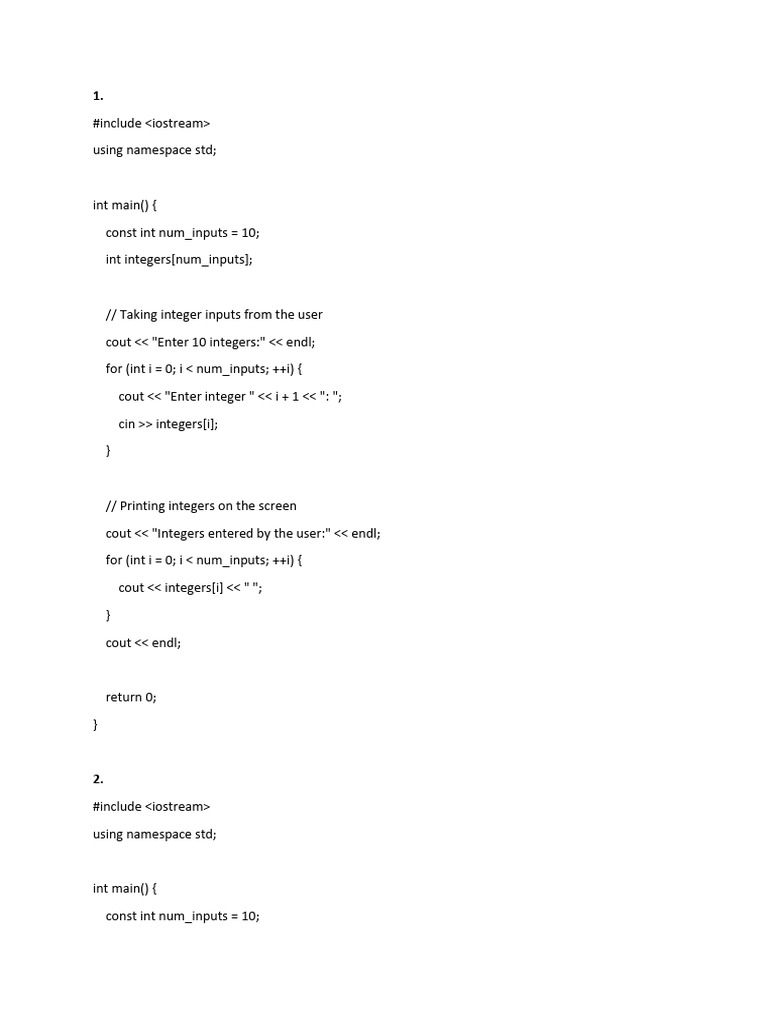Arrays are everywhere, shaping the way we interact with technology every single day. Whether you're building a simple app or designing complex algorithms, arrays play a crucial role in solving real-world problems. From storing user data to managing inventory systems, array solutions are the backbone of modern programming. But what exactly makes arrays so powerful? Let's dive into the fascinating world of array-based problem-solving and discover why developers love this versatile data structure.
Imagine a world without arrays. How would we organize data efficiently? How would we manage collections of information in a way that's both fast and scalable? Arrays provide the answer to these questions, offering a structured approach to handling data that's easy to implement and highly efficient. Whether you're a beginner programmer or an experienced developer, understanding array solutions is essential for building robust software systems.
In this article, we'll explore everything you need to know about array solutions – from basic concepts to advanced techniques. You'll learn how arrays work, common use cases, and how to optimize them for maximum performance. So buckle up, because we're about to embark on an exciting journey into the realm of array-based problem-solving!
Read also:Elon Musks Wife 2024 Latest Updates And Details
Understanding the Basics of Arrays
Before we dive into array solutions, let's start with the fundamentals. An array is essentially a collection of elements stored in a contiguous block of memory. Think of it like a row of boxes where each box holds a specific value. The beauty of arrays lies in their simplicity and efficiency. They allow you to access elements instantly using an index, making them perfect for scenarios where speed matters.
Key Characteristics of Arrays
Here are some important features that make arrays stand out:
- Fixed size: Arrays have a predetermined length, which means you can't add or remove elements dynamically.
- Homogeneous data: All elements in an array typically share the same data type, ensuring consistency and predictable behavior.
- Random access: You can directly access any element using its index, eliminating the need to traverse the entire array.
- Memory efficiency: Arrays use memory more efficiently compared to other data structures, as they store elements in a compact format.
These characteristics make arrays an ideal choice for a wide range of applications, from game development to financial systems. By understanding how arrays work, you'll be better equipped to tackle complex problems using array-based solutions.
Common Use Cases for Array Solutions
Now that we've covered the basics, let's explore some real-world scenarios where array solutions shine. Arrays are incredibly versatile, and their applications span across various industries and domains. Here are a few examples:
Data Storage and Management
Arrays are often used to store and manage large datasets. For instance, in e-commerce platforms, arrays can be used to store product information such as names, prices, and quantities. This allows developers to quickly retrieve and manipulate data as needed. Similarly, in social media applications, arrays can store user profiles, posts, and comments, enabling efficient data retrieval and processing.
Image Processing
Arrays play a crucial role in image processing applications. Images are essentially grids of pixels, and each pixel can be represented as an array of color values. By manipulating these arrays, developers can perform tasks like image resizing, filtering, and compression. This makes arrays indispensable in fields like computer vision and graphic design.
Read also:Maria Nagai A Closer Look Into Her Life And Career
Scientific Computing
In scientific computing, arrays are used to represent matrices and vectors, which are fundamental to many mathematical operations. From solving linear equations to simulating physical systems, arrays provide the foundation for complex computations. Libraries like NumPy in Python leverage arrays to perform high-performance numerical calculations.
Optimizing Array Solutions for Performance
While arrays are powerful, they can sometimes become bottlenecks if not used correctly. To ensure your array solutions perform optimally, consider the following tips:
Choosing the Right Data Type
Selecting the appropriate data type for your array elements can significantly impact performance. For example, using integers instead of floating-point numbers can reduce memory usage and improve processing speed. Similarly, choosing between signed and unsigned integers depends on the specific requirements of your application.
Minimizing Memory Access
Accessing memory can be slow, especially when dealing with large arrays. To optimize performance, try to access array elements in a sequential manner whenever possible. This allows the CPU to take advantage of caching mechanisms, reducing the time required to fetch data from memory.
Parallel Processing
Modern processors have multiple cores, which can be harnessed to accelerate array-based computations. By dividing the workload across multiple threads, you can significantly speed up tasks like sorting, searching, and filtering. Libraries like OpenMP and CUDA make it easier to implement parallel processing in your array solutions.
Advanced Array Techniques
Once you've mastered the basics, it's time to explore some advanced techniques that can take your array solutions to the next level. These methods go beyond simple data storage and retrieval, enabling you to solve complex problems more efficiently.
Dynamic Arrays
Although traditional arrays have a fixed size, dynamic arrays allow you to resize them as needed. This flexibility comes at a cost, as resizing operations can be expensive. However, by implementing strategies like doubling the capacity when resizing, you can minimize the impact on performance while still enjoying the benefits of dynamic sizing.
Multi-Dimensional Arrays
Arrays aren't limited to one dimension. Multi-dimensional arrays, such as matrices, are widely used in scientific computing, image processing, and machine learning. By organizing data in multiple dimensions, you can represent complex relationships and perform operations that would be difficult or impossible with one-dimensional arrays.
Array Segmentation
In certain scenarios, dividing an array into smaller segments can improve performance and simplify problem-solving. For example, in distributed systems, you might split an array across multiple nodes to enable parallel processing. This approach not only speeds up computations but also enhances fault tolerance and scalability.
Array Solutions in Modern Programming Languages
Different programming languages offer unique approaches to implementing array solutions. Let's take a look at how some popular languages handle arrays:
Java
Java provides built-in support for arrays, making it easy to declare, initialize, and manipulate them. The language also includes utility classes like Arrays, which offer methods for sorting, searching, and copying arrays. Additionally, Java's object-oriented nature allows developers to create custom array-like structures by extending existing classes.
Python
Python's array implementation is both flexible and powerful. The language provides built-in support for lists, which are similar to arrays but offer more functionality. Libraries like NumPy extend Python's array capabilities, enabling developers to perform high-performance numerical computations with ease.
C++
C++ offers both traditional arrays and advanced data structures like vectors and deques. This flexibility allows developers to choose the best solution for their specific needs. C++ also provides low-level control over memory management, enabling highly optimized array implementations for performance-critical applications.
Challenges and Limitations of Array Solutions
While arrays are incredibly useful, they do have some limitations that developers need to be aware of. Understanding these challenges will help you design more effective array solutions:
Memory Constraints
Arrays require contiguous blocks of memory, which can be problematic when dealing with large datasets. If there isn't enough contiguous memory available, your program may fail to allocate the array or experience performance issues. To mitigate this, consider using alternative data structures like linked lists or hash tables when memory constraints are a concern.
Fixed Size Limitation
Traditional arrays have a fixed size, which can limit their flexibility in certain scenarios. While dynamic arrays address this limitation to some extent, they still require additional overhead for resizing operations. In situations where the size of the dataset is unpredictable, other data structures might be more appropriate.
Performance Trade-offs
While arrays offer fast random access, certain operations like insertion and deletion can be slow, especially for large arrays. This is because elements need to be shifted to maintain the contiguous memory layout. In scenarios where frequent insertions and deletions are required, alternative data structures like linked lists or trees might provide better performance.
Best Practices for Implementing Array Solutions
To ensure your array solutions are efficient, reliable, and maintainable, follow these best practices:
- Plan ahead: Determine the size and structure of your array based on the specific requirements of your application.
- Use appropriate data types: Choose the right data type for your array elements to optimize memory usage and performance.
- Handle edge cases: Test your array solutions with various input sizes and edge cases to ensure they behave as expected.
- Optimize memory access: Minimize memory access overhead by accessing array elements in a sequential manner whenever possible.
- Document your code: Clearly document the purpose and functionality of your array solutions to make them easier to understand and maintain.
By following these guidelines, you'll be able to create robust array solutions that meet the needs of your application while maintaining high performance and reliability.
Future Trends in Array Solutions
The field of array solutions is constantly evolving, driven by advancements in technology and changing user needs. Here are some emerging trends to watch out for:
Quantum Computing
As quantum computing becomes more mainstream, arrays will play a crucial role in representing and manipulating quantum states. The ability to perform parallel computations on massive datasets will revolutionize fields like cryptography, optimization, and machine learning.
AI and Machine Learning
Arrays are fundamental to AI and machine learning algorithms, where they're used to represent input data, model parameters, and output predictions. As these fields continue to grow, the demand for efficient array solutions will only increase.
Cloud-Based Solutions
With the rise of cloud computing, array solutions are increasingly being implemented in distributed environments. This allows developers to scale their applications seamlessly, handling larger datasets and more complex computations than ever before.
Conclusion
In conclusion, array solutions are an essential tool for developers, offering a powerful and efficient way to manage and manipulate data. By understanding the basics, exploring advanced techniques, and staying up-to-date with emerging trends, you can unlock the full potential of arrays in your applications.
We encourage you to experiment with different array implementations and share your experiences in the comments below. Whether you're a beginner or an experienced developer, there's always something new to learn about array solutions. So keep exploring, keep coding, and most importantly, have fun!
Don't forget to check out our other articles on data structures and algorithms for even more insights and tips. Happy coding!
Table of Contents
- Understanding the Basics of Arrays
- Common Use Cases for Array Solutions
- Optimizing Array Solutions for Performance
- Advanced Array Techniques
- Array Solutions in Modern Programming Languages
- Challenges and Limitations of Array Solutions
- Best Practices for Implementing Array Solutions
- Future Trends in Array Solutions
- Conclusion


